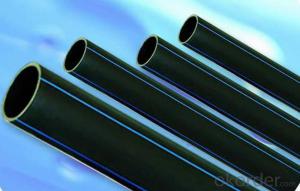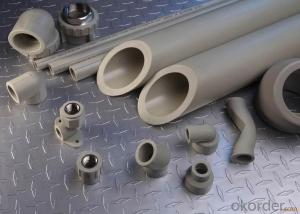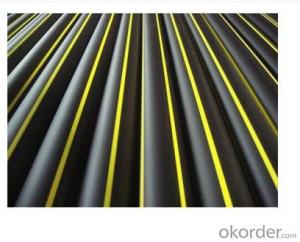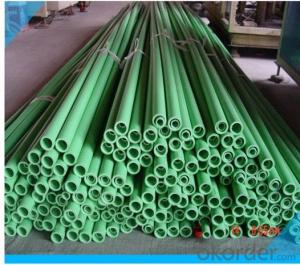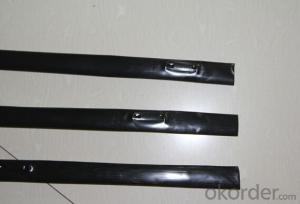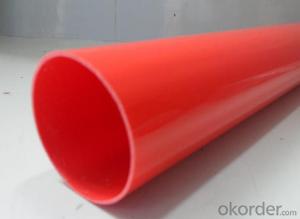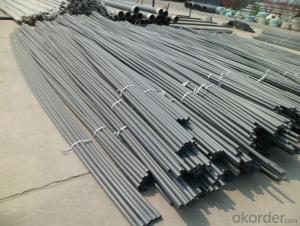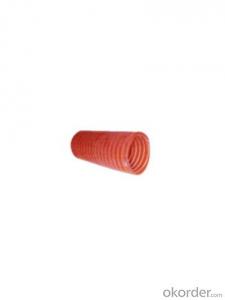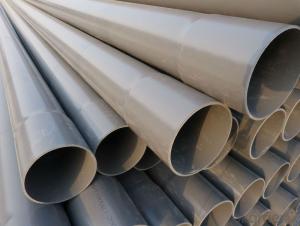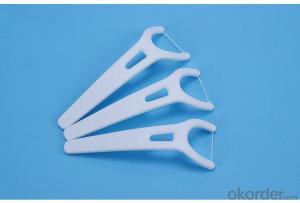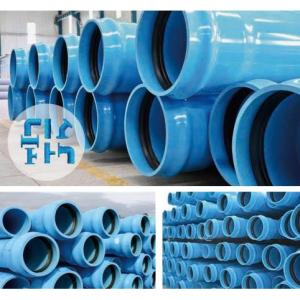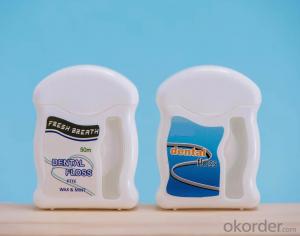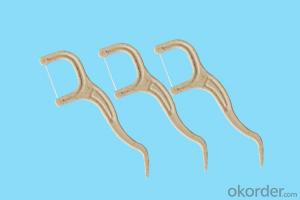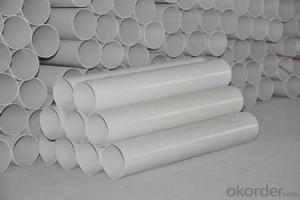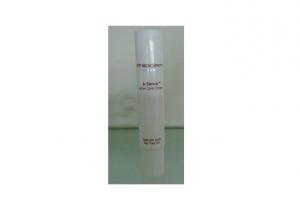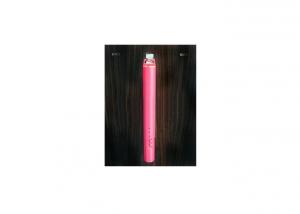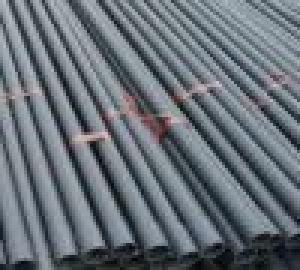HDPE PIPE ISO4427-2000
- Loading Port:
- China Main Port
- Payment Terms:
- TT OR LC
- Min Order Qty:
- -
- Supply Capability:
- -
OKorder Service Pledge
OKorder Financial Service
You Might Also Like
Physical properties[edit]
Polyethylene is a thermoplasticpolymer consisting of long hydrocarbon chains. Depending on the crystallinity and molecular weight, a melting point and glass transition may or may not be observable. The temperature at which these occur varies strongly with the type of polyethylene. For common commercial grades of medium- and high-density polyethylene the melting point is typically in the range 120 to 180 °C (248 to 356 °F). The melting point for average, commercial, low-density polyethylene is typically 105 to 115 °C (221 to 239 °F).it is transprant.
Chemical properties[edit]
Most LDPE, MDPE and HDPE grades have excellent chemical resistance, meaning that it is not attacked by strong acids or strong bases. It is also resistant to gentle oxidants and reducing agents. Polyethylene burns slowly with a blue flame having a yellow tip and gives off an odour of paraffin. The material continues burning on removal of the flame source and produces a drip.[3] Crystalline samples do not dissolve at room temperature. Polyethylene (other than cross-linked polyethylene) usually can be dissolved at elevated temperatures in aromatic hydrocarbons such as toluene or xylene, or in chlorinated solvents such as trichloroethane or trichlorobenzene.[4]
GB/T13663-2000:
| PE63管材规格 | |||||
| 公称 外径dn,mm | SDR33 | SDR26 | SDR17.6 | SDR13.6 | SDR11 |
| 公称压力 PN,Mpa | |||||
| 0.32 | 0.4 | 0.6 | 0.8 | 1.0 | |
| 公称 壁厚 | 公称 壁厚 | 公称 壁厚 | 公称 壁厚 | 公称 壁厚 | |
| 16 | 2.3 | ||||
| 20 | 2.3 | 2.3 | |||
| 25 | 2.3 | 2.3 | 2.3 | ||
| 32 | 2.3 | 2.4 | 2.9 | ||
| 40 | 2.3 | 2.3 | 3.0 | 3.7 | |
| 50 | 2.3 | 2.9 | 3.7 | 4.6 | |
| 63 | 2.3 | 2.5 | 3.6 | 4.7 | 5.8 |
| 75 | 2.3 | 2.9 | 4.3 | 5.6 | 6.8 |
| 90 | 2.8 | 3.5 | 5.1 | 6.7 | 8.2 |
| 110 | 3.4 | 4.2 | 6.3 | 8.1 | 10.0 |
| 125 | 3.9 | 4.8 | 7.1 | 9.2 | 11.4 |
| 140 | 4.3 | 5.4 | 8.0 | 10.3 | 12.7 |
| 160 | 4.9 | 6.2 | 9.1 | 11.8 | 14.6 |
| 180 | 5.5 | 6.9 | 10.2 | 13.3 | 16.4 |
| 200 | 6.2 | 7.7 | 11.4 | 14.7 | 18.2 |
| 225 | 6.9 | 8.6 | 12.8 | 16.6 | 20.5 |
| 250 | 7.7 | 9.6 | 14.2 | 18.4 | 22.7 |
| 280 | 8.6 | 10.7 | 15.9 | 20.6 | 25.4 |
| 315 | 9.7 | 12.1 | 17.9 | 23.2 | 28.6 |
| 355 | 10.9 | 13.6 | 20.1 | 26.1 | 32.2 |
| 400 | 12.3 | 15.3 | 22.7 | 29.4 | 36.3 |
| 450 | 13.8 | 17.2 | 25.5 | 33.1 | 40.9 |
| 500 | 15.3 | 19.1 | 28.3 | 36.8 | 45.4 |
| 560 | 17.2 | 21.4 | 31.7 | 41.2 | 50.8 |
| 630 | 19.3 | 24.1 | 35.7 | 46.3 | 57.2 |
- Q:Can plastic tubes be used for cable management?
- Yes, plastic tubes can be used for cable management. They are commonly used to organize and protect cables, providing a neat and organized appearance while also preventing tangling and damage to the cables. Plastic tubes are flexible and durable, making them suitable for various cable management applications in both residential and commercial settings.
- Q:Is it OK to drink water with plastic pipes at high temperature?
- If used in high temperature conditions, may cause performance instability, there is a certain risk. Only plastic pipes which meet the requirements of high temperature can be used.
- Q:Are plastic tubes resistant to UV light?
- Yes, plastic tubes can be resistant to UV light depending on the type of plastic they are made from. Some plastics, such as PVC and acrylic, are more resistant to UV light and are commonly used for outdoor applications. However, other plastics, like polyethylene, can be more susceptible to UV degradation and may require additional UV stabilizers or coatings to enhance their resistance.
- Q:Wondering if there is any health risk associated with putting pieces of copper pipe, plastic PVC (?) pipe, or garden hose pieces into a campfire? I have been to campfires where these things have been put into the fire, and it does make the fire turn all kinds of colors. Just wondering if it's safe to sit around the burning campfire with these things added....
- Copper shouldn't be a problem, but PVC and Plastic or rubber hose will burn and give off noxious fumes.
- Q:Are plastic tubes safe for food and beverage applications?
- Yes, plastic tubes are generally safe for food and beverage applications. However, it is important to note that the safety depends on the type of plastic used and its compliance with food-grade standards. Food-grade plastics, such as polyethylene and polypropylene, are commonly used for manufacturing tubes that come into contact with food and beverages. These plastics are non-toxic, resistant to chemicals, and can withstand the necessary temperatures for food and beverage applications. Additionally, it is vital to ensure that the plastic tubes are properly cleaned and maintained to prevent any contamination.
- Q:Are plastic tubes suitable for laboratory use?
- Yes, plastic tubes are suitable for laboratory use. They are commonly used in various laboratory applications such as storing and transporting samples, as well as for centrifugation and other types of experiments. Plastic tubes are lightweight, durable, and resistant to many chemicals, making them a practical and cost-effective option for laboratory use.
- Q:I have a tube thats plastic and after i peeled the sticker off it was all sticky. Any help?
- Old fashioned liquid cigarette lighter fluid will dissolve the adhesive and you can wipe it off with a soft cloth or paper towel.
- Q:How do you prevent plastic tubes from becoming discolored?
- To prevent plastic tubes from becoming discolored, you can follow a few simple steps. First, avoid exposing them to direct sunlight or excessive heat, as this can cause fading or yellowing. Second, clean them regularly using a mild soap or detergent and warm water, avoiding harsh chemicals that can cause discoloration. Third, try to store them in a cool and dry place, away from any potential contaminants or chemicals that may stain them. Finally, consider using UV-resistant or opaque tubes that are specifically designed to resist discoloration.
- Q:Is home tap water iron or plastic good?
- As a water pipe, use after a few years, produced a lot of rust in the tube, the outflow of water not only pollute the sanitary ware, and mixed with smooth inner wall corrosion caused by bacteria, heavy metal content in the water is too high, serious harm to human health (the state has been prohibited when drinking water).
- Q:One charged plastic ball is vertically above another in a test tube. The balls are in equilibrium a distance d apart. If the charge on each ball is doubled, the distance between the balls in the test tube would become:a. 4db. 2dc. 8d
- Equilibrium is established when the electric force between the balls = weight of upper ball .. this force is constant at any spacing. F = k.q1.q2 / d? .. .. For constant F .. q1.q2 ∝ d? .. .. d ∝ √(q1.q2) When q1 and q2 double .. (q1.q2) increases by a factor of 4 .. and d by a factor √4 = 2 Ans .. ?(b).2d
1. Manufacturer Overview |
|
|---|---|
| Location | |
| Year Established | |
| Annual Output Value | |
| Main Markets | |
| Company Certifications | |
2. Manufacturer Certificates |
|
|---|---|
| a) Certification Name | |
| Range | |
| Reference | |
| Validity Period | |
3. Manufacturer Capability |
|
|---|---|
| a)Trade Capacity | |
| Nearest Port | |
| Export Percentage | |
| No.of Employees in Trade Department | |
| Language Spoken: | |
| b)Factory Information | |
| Factory Size: | |
| No. of Production Lines | |
| Contract Manufacturing | |
| Product Price Range | |
Send your message to us
HDPE PIPE ISO4427-2000
- Loading Port:
- China Main Port
- Payment Terms:
- TT OR LC
- Min Order Qty:
- -
- Supply Capability:
- -
OKorder Service Pledge
OKorder Financial Service
Similar products
New products
Hot products
Hot Searches
Related keywords
